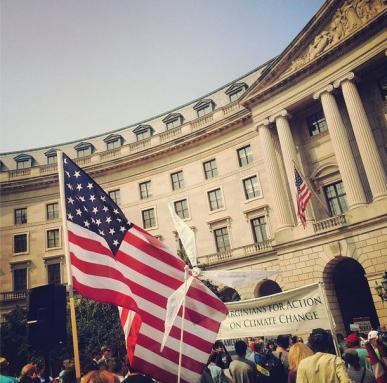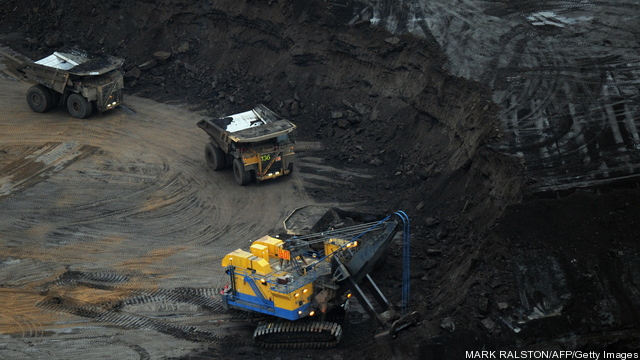Planning
Ohio Elections Yield Mixed Results on Local Hydraulic Fracturing Bans
By Andrew Doggett | BakerHostetlerSign up and get Breaking Energy news in your inbox.
We will never sell or share your information without your consent. See our privacy policy.Numerous Parties Line Up in Support of Petition in Delta Smelt Case
By Paul Weiland | Nossaman LLPAs we reported here, on October 6, 2014, a number of public water agencies and other entities that represent agricultural and municipal water users in California filed a petition for writ of certiorari with the U.S. Supreme Court. The petition was filed after a divided panel of the United States Court of Appeals for the Ninth Circuit issued a decision affirming a biological opinion issued by the U.S. Fish and Wildlife Service with respect to continuing operations of the federal Central Valley Project and State Water Project. The panel held that the biological opinion and accompanying reasonable and prudent alternative do not violate the Administrative Procedure Act and Endangered Species Act. The deadline to file amicus briefs in support of the petition was November 6, 2014.
EPA Further Delays Hydraulic Fracturing Study As Controversy Builds
By Ronald Farley | Burr & FormanEPA’s current estimate of the completion time for a draft of its study of the risks posed by hydraulic fracturing (“fracking”) to drinking water is now projected by the agency to be developed in early 2015. This is based on comments in a letter originating from EPA’s Region 8 office stating that the study on the risks posed by fracking to drinking water won’t reach draft final form until “early 2015”. [Region 8 Letter]
EPA Draft Ruling Could Mean Significant Changes to How Stormwater Systems are Categorized
By Shawn Hagerty, Andre Monette | Best Best & Krieger LLPThe last thing that public agency leaders want to hear is that looming changes may make operating and building new public infrastructure more challenging and expensive. Unfortunately, proposed changes by the Environmental Protection Agency to the Clean Water Act could ultimately stop, delay or increase the cost of public projects.
The federal Clean Water Act establishes the basic structure for regulating discharges of pollutants into the waters of the United States and regulating the quality of those waters. The pending changes, if adopted, could greatly expand the jurisdictional reach of the CWA and change how municipal stormwater systems are categorized.
The Northern Plan will focus on the integrated and coherent development of the area covered by the Northern Plan which includes all of Québec located north of the 49th degree of north latitude and north of the St. Lawrence River and the Gulf of St. Lawrence. There are several mining exploration projects and major mining projects at various stages of development in the north, some of which require significant access to infrastructures. The Government of Quebec intends to take steps to facilitate the implementation of mining and other projects in the area. With confirmation by the Government of Québec of its intention to relaunch the Northern Plan by introducing Bill 11, An Act respecting the Société du Plan Nord, on September 30, 2014, the implementation of the Northern Plan continues. Bill 11 reiterates the majority of the elements included in the former Bill 27, An Act respecting the Société du Plan Nord, introduced in 2011, which was examined by a parliamentary committee. However, Bill 11 contains new elements and incorporates differences when compared to the previous version as outlined in “Relaunching the Northern Plan: Introduction of the Bill to establish the Société du Plan Nord” [Link]. Mr. Couillard’s government seems determined to proceed with the implementation of all mechanisms required for the orderly deployment of the Northern Plan while the mining sector and international business community continue to demonstrate interest in this major plan.
Environmental Claims: The Gift That Keeps On Giving
By Vicki Harding | Pepper Hamilton LLPFeds Approve Quebec-to-NY Power Line
By Todd Griset | PretiFlahertyA proposed electric transmission line connecting Quebec to New York will receive a key federal approval, according to the U.S. Department of Energy. The Energy Department’s decision to issue a Presidential permit to Champlain Hudson Power Express, Inc. focuses attention on the nation’s international trade in electricity, and may suggest increased reliance on power imports.
Pursuant to two Executive Orders — EO 10485 (September 9, 1953), as amended by EO 12038 (February 7, 1978) — no electricity transmission facilities may be constructed, operated, maintained, or connected at the U.S. border without first obtaining a Presidential permit from the Department of Energy. In 2010, Champlain Hudson Power Express, Inc. applied to DOE for a Presidential permit to construct, operate, maintain, and connect a 1,000-megawatt (MW), high-voltage direct current (HVDC) merchant electric power transmission system across the U.S./Canada border.
Interior Announces New Proposal for Renewable Energy Development on Public Lands
By Andrew Anderson, Joshua Andrews, Andrew Ehrlich | Faegre Baker DanielsLast week, the U.S. Department of Interior released its new proposal for development of solar and wind resources on public lands. The proposal, referred to as the Desert Renewable Energy Conservation Plan (DREC), focuses on the desert land across seven California counties — Imperial, Inyo, Kern, Los Angeles, Riverside, San Bernardino and San Diego. It was developed through collaboration among California state agencies as well as the federal government in an attempt to facilitate California’s renewable electricity portfolio and renewable energy development on federal lands.
California Energy Commission Delays Compliance With Energy Disclosure Program For Smaller Nonresidential Buildings
By Sharona Toobian | Perkins CoieThe California Energy Commission (CEC) implemented the Nonresidential Building Energy Use Disclosure Program in two phases. The first phase took effect on January 1, 2014 and applies to nonresidential buildings of at least 10,000 square feet. While the second phase, which imposes disclosure requirements for nonresidential buildings of at least 5,000 square feet, was supposed to take effect on July 1, 2014, this disclosure timeline was just delayed two years. The CEC recently announced that the compliance date for the second phase has been pushed from July 1, 2014 to July 1, 2016.








